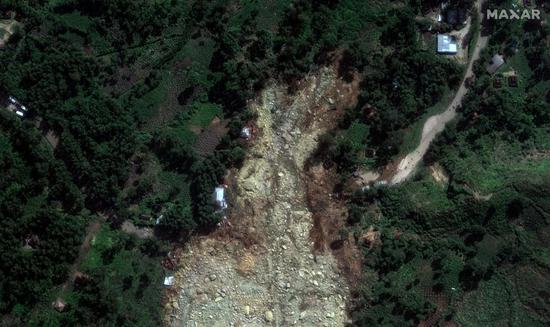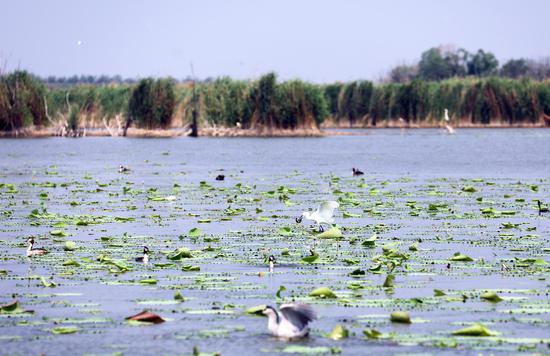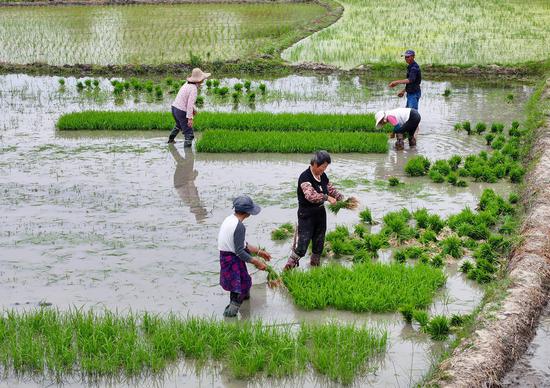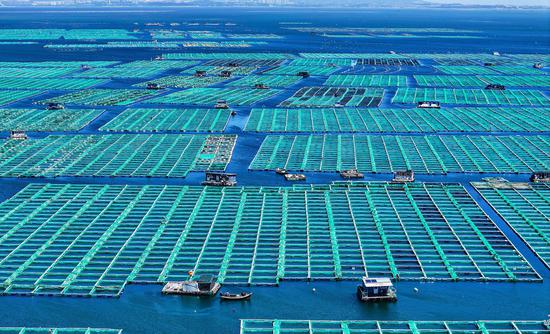Ministry boosts forecasting accuracy and resilience against inundation
Facing a busy flood season, the Ministry of Water Resources has bolstered flood resilience in small and medium-sized rivers, and leveraged advanced technology to improve the accuracy of forecasts.
This year has witnessed an earlier-than-usual flood season, starting April 1, and many places in China will gradually enter the main flood season from June through August, featuring more frequent, intense and widespread extreme events, with a high probability of disastrous impacts, the ministry said.
Due to persistent heavy rainfall, rivers in regions such as the Guangxi Zhuang autonomous region and Guangdong province in the Pearl River basin, Anhui province in the Huaihe River basin, and Sichuan province in the Yangtze River basin have witnessed rising water levels over the past week, with reports of some small and medium-sized rivers exceeding their flood warning levels.
It is estimated that strong rain will hit areas including Guangxi and the provinces of Guangdong, Anhui, Zhejiang, Fujian, Guizhou, Jiangxi and Hubei from Tuesday through Saturday, with accumulated precipitation of between 30 and 60 millimeters.
Water levels are expected to rise in the Pearl, Yangtze and Taihu river basins, with potential for flooding.
South China is now experiencing the "dragon boat rain" period, a time characterized by the most frequent and concentrated rainfall in the pre-flood season around the Dragon Boat Festival.
The impact of this year's dragon boat rain is expected to be more severe than in normal years, and the Xijiang, Beijiang, Dongjiang and Hanjiang rivers in the Pearl River basin are at risk of flooding, Xu Shuang, director of the flood and drought disaster prevention department at the Pearl River Water Conservancy Department, told People's Daily.
In mid to late June, East China will enter the plum rain season. Warm air from Southeast Asia will trigger a rain belt circulating around the Yangtze River basin, leading to rainy days for several weeks.
The Haihe, Liaohe, Huaihe, Songhuajiang and Yellow river basins are also predicted to have increased rainfall.
Li Chenliang, from the Ministry of Water Resources' flood and drought disaster prevention department, said the basins of small and medium-sized rivers, which feature expansive areas, represent a weak link in flood control, People's Daily reported.
Li said that rivers in mountainous regions pose a heightened risk of flooding due to their swift convergence and abrupt fluctuations. To bolster flood control and disaster mitigation capabilities, the ministry is implementing measures like dredging river channels, embankment construction and reinforcing water conservancy projects.
In addition, the ministry has established a comprehensive forecasting and early warning system, incorporating radars and hydrometric stations to obtain more precise and real-time data on rainfall and water conditions. A predictive model is also under development to extend the lead time for forecasts and enhance accuracy.
The lead time for national rainfall has been extended to 30 days, with forecast accuracy exceeding 90 percent during critical periods along major rivers.


















































 京公网安备 11010202009201号
京公网安备 11010202009201号